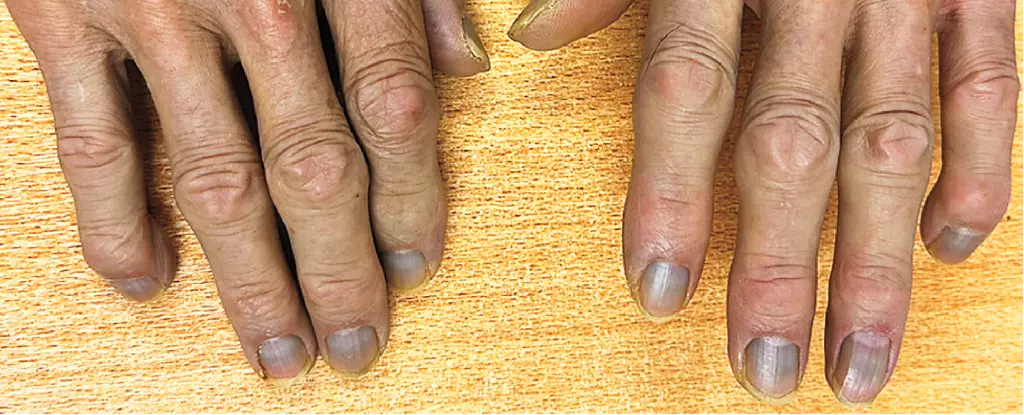In the realm of medical anomalies, few conditions are as curious or misunderstood as argyria. A striking health case from a Hong Kong hospital highlights the potential complexities involved in diagnosing such conditions. An 84-year-old man presented with complications stemming from a urinary flow obstruction, raising initial concerns typical of his age group. However, what left his medical team bewildered was an unexpected symptom: a grayish tint to his skin, eyes, and nails. This unusual coloration was not a recent development; rather, it had been present for five years. Understanding such a rare condition not only sheds light on the individual patient but also serves to illuminate the broader implications of metal accumulation in the human body.
Blood tests soon revealed an astonishing result: the patient’s body contained silver concentrations over 40 times the level typically found in healthy individuals. This systemic silver buildup was the root cause of his alarming ashen hue. Once silver enters the body, it can become deposited in various tissues and organs, and in the case of our patient, it gravitated toward the skin. The characteristic gray or blue hue results from silver ions reacting to UV radiation, forming compounds that reflect light in such a way that alters the skin’s appearance. While the patient’s profession as a waiter seemed to suggest no substantial occupational exposure to silver, the mystery deepened, raising questions about how this contamination began.
The Historical Context of Argyria
Historically, argyria has primarily affected individuals who worked with silver — artisans, miners, and industrial workers who were routinely exposed to the metal. In more contemporary instances, however, its causes often include the misuse of colloidal silver, a substance that has gained popularity as a supposed health remedy. Despite its marketing as a natural cure, colloidal silver lacks scientific endorsement, and agencies such as the U.S. Food and Drug Administration (FDA) have warned against its use for treating any diseases or conditions. Nonetheless, products claiming to contain silver for purported health benefits are readily available in various forms across the world. This raises important questions about consumer safety and the efficacy of unregulated health products.
Silver isn’t just absorbed through a singular route; it can permeate the body via inhalation, skin contact, or ingestion. Once inside, the positively charged silver particles can disperse throughout various tissues. As they accumulate, particularly in areas exposed to sunlight, they can catalyze chemical reactions that lead to the classic symptoms of argyria. These phenomena demonstrate the potential risks associated with unverified health supplements and the dangers of casual consumer habits regarding metal ingestion.
Fortunately for the patient in this case, argentification typically does not pose severe health risks. The relatively benign nature of silver accumulation means that aside from its cosmetic implications, individuals often experience little to no adverse effects on their overall health. However, one must acknowledge possible complications; elevated silver levels may interfere with the absorption of certain medications, including common antibiotics and thyroid hormones like thyroxine. This highlights the need for vigilance in monitoring patients with unusual metal concentrations, ensuring that their medical regimens are not compromised.
Despite extensive investigations, the exact source of this man’s silver exposure remains elusive. Without evidence of industrial or environmental exposure, this case serves as a reminder of the intricate puzzle that healthcare professionals sometimes face. This patient will likely be subject to long-term monitoring of his silver levels, a precaution to preempt any unforeseen health issues that may arise.
The case of this 84-year-old man grappling with argyria underscores the critical intersection of medicine, environmental factors, and consumer safety. As individuals encounter various health supplements in a bid for improved wellness, awareness of potential metal toxicity becomes paramount. This example illustrates not only the perplexing nature of certain medical conditions but also serves as a call to action regarding the importance of regulation in the health supplement industry. As we continue to seek understanding in the face of these complexities, perhaps we can better educate ourselves and others on the unseen risks latent in seemingly benign remedies.

Leave a Reply